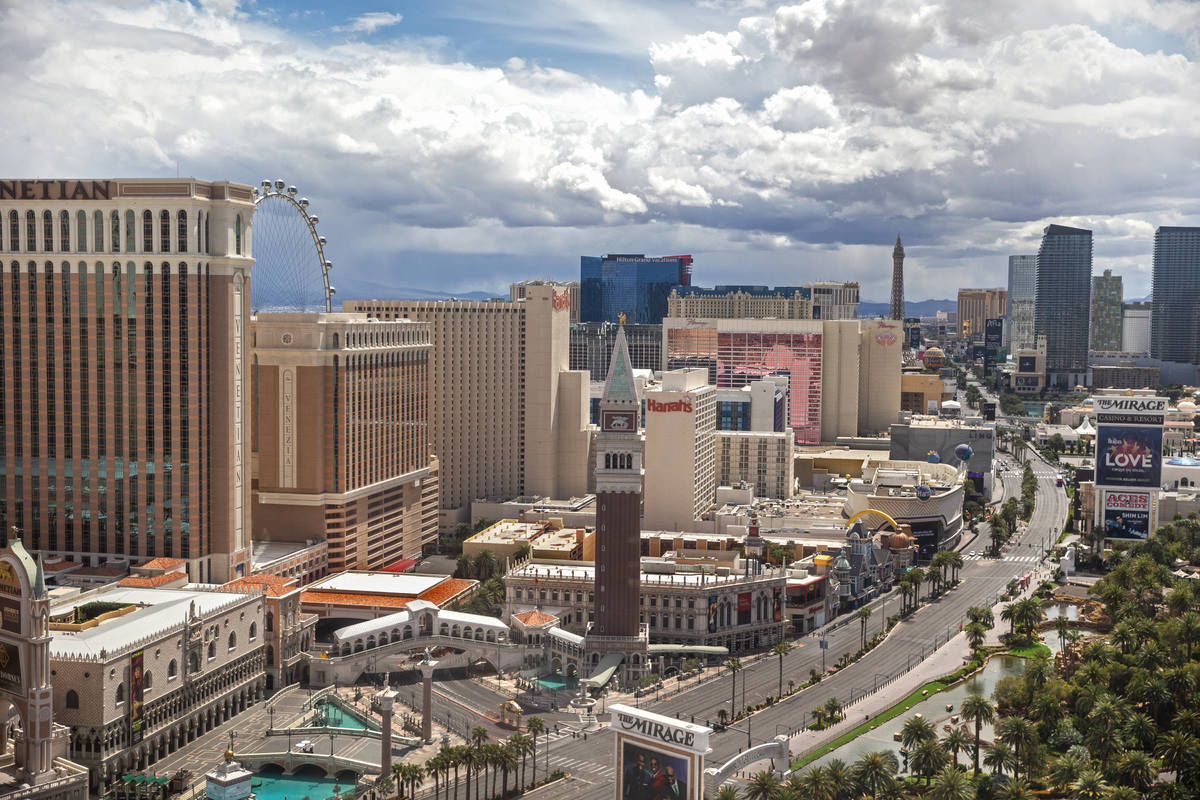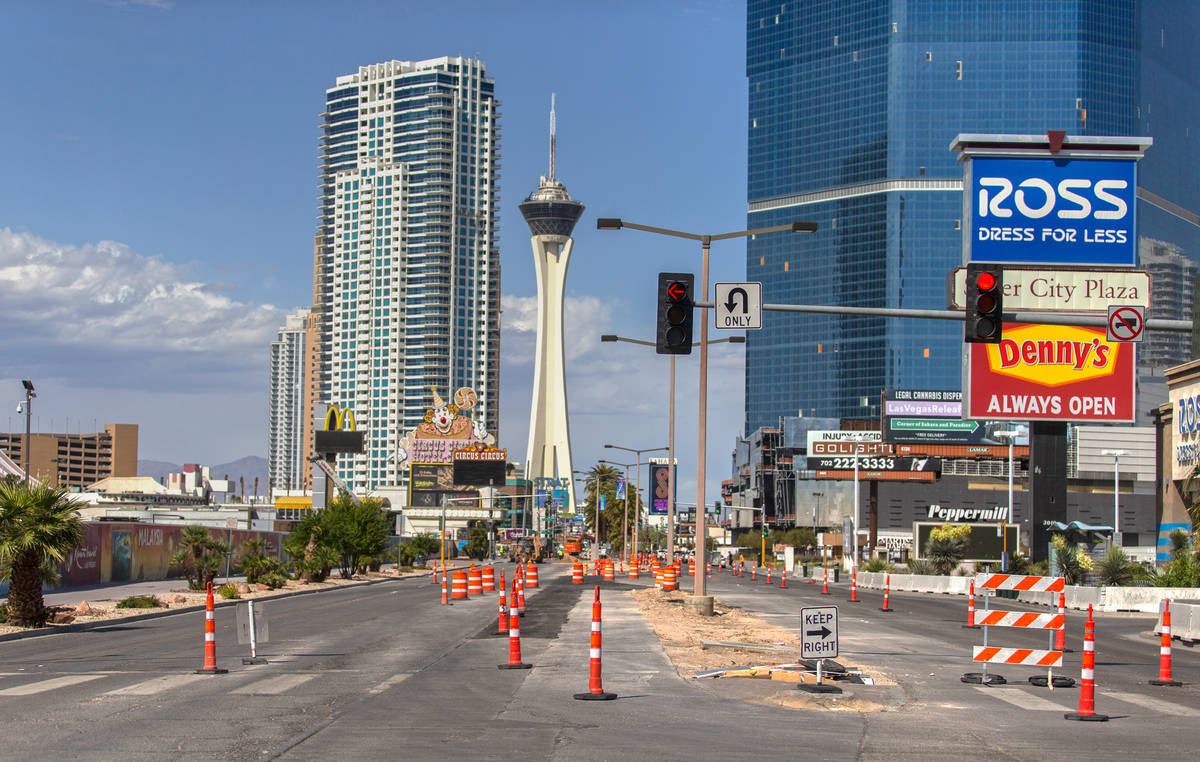Experts: Nevada economic recovery at least 2 years away
It could take at least two years before Nevada’s economy bounces back to pre-pandemic levels, according to forecasts presented by financial experts during a meeting of the state’s Economic Forum on Tuesday.
But those projected recovery timetables are based in large part on when a vaccine would become widely available and when or if the federal government were to pass a second stimulus package similar to the one passed in March. And any delays to either could further prolong the state’s economic growth, the forecasters said.
The forum sets the projected state revenue figures the governor and Legislature rely on to create the state’s two-year budget. Tuesday’s meeting covered a plethora of data and multiple projected models for the state’s major revenue sources, including gaming, live entertainment, retail, real estate and various taxes, and what recovery for those areas are expected to look like over the next few years.
The presentations underscore what the state is already bracing for: Tax revenues will take a major hit over the next two years as the economy here and across the nation slowly rebound from the economic downturn caused by the COVID-19 pandemic.
Budget cuts coming
Last week, Gov. Steve Sisolak’s finance office sent a memo to the heads of state agencies instructing them to submit budget cuts of 12 percent for both fiscal year 2022 and 2023.
In a statement last week, Sisolak said that the state “faces historic shortfalls as a result of COVID-19, and we must work together to responsibly prepare for the next biennium under the upcoming projections.”
“Like Nevada families, the State must budget with what we have in front of us in our current situation as we continue to monitor projections and updates,” Sisolak said.
The forum will make its final projection, which will give the clearest picture yet of the state’s fiscal outlook, on Dec. 3.
How quickly gaming and tourism bounce back will be the key to the state’s economic recovery.
Most of the projections for gaming revenues presented Tuesday offered similar outlooks: further downturn in fiscal year 2021 — which started on July 1 and goes through June 30 — with the situation bouncing back slightly in fiscal year 2022 and larger increases the following year — a model that mostly mirrors the general economic outlook for the state.
Encouraging signs
But there are some encouraging signs that the state’s tourism industry is bouncing back, even as Americans remain skeptical about traveling by plane, said David Schmidt, chief economist for the state’s Department of Employment, Training and Rehabilitation.
Schmidt said that since Labor Day, incoming traffic counts along the Interstate 15 in Southern Nevada and U.S. Highway 50 near Lake Tahoe have seen significant upticks compared with the same period last year, indicating that people are still traveling to the state’s largest tourism draws.
One aspect of the state’s economy that could lag behind even the other sluggish areas is taxes generated from live entertainment.
“It captures parts of the economy involved with being in confined spaces and among large gatherings. And those events cannot fully come back until restrictions are lifted and people feel comfortable enough to go to events in these confined spaces,” said Susanna Powers, an economist from the Governor’s Finance Office.
Taxes generated from live entertainment from gaming establishments — the majority of which come from shows on the Strip — are projected to decrease by 98.2 percent for fiscal year 2021 to just $1.3 million before bouncing back in 2022 and 2023, said Russell Guindon, principal deputy of the Legislature’s Fiscal Analysis Division. But given the uncertainty of the industry, Guindon noted that his projections were “more of a guess than a forecast.”
“It’s probably the last thing to come back,” said Mike Lawton, an economist from the Gaming Control Board.
Slow national rebound
Dan White from Moody’s Analytics said that its projections show that the nation’s economic recovery will be gradual or even near flat from now until late spring 2021 as businesses and other aspects of daily life have returned with significant restrictions.
White said that the final phase of the recovery road map won’t even start until there is a vaccine for the virus, one that is both widely available and widely accepted by the public.
White, with the other forecasters, which included economists from the state’s Gaming Control Board, Governor’s Finance Office, Legislative Counsel Bureau and Department of Taxation, said that their projected recovery models are in large part predicated on a second stimulus package being passed by the federal government within the first few months of calendar year 2021.
There is no certainty at this point that such a package will come by next March, and not having that relief would “prolong the recession well beyond the current forecast and make that already gradual recovery in the data even more gradual,” he said.
Contact Capital Bureau Chief Colton Lochhead at clochhead@reviewjournal.com. Follow @ColtonLochhead on Twitter.



















